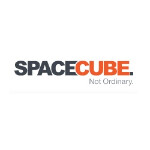At Spacecube, we like to think we are a cog in the big wheel of human endeavour when it comes to building and construction. To be a part of the on-going history of this never-ending story is something which sits well with us.
Our small part, modular construction, is one of those building methods whose time has come. Again. Interestingly, Australia, which has had a proud history of building and construction, also played a part in the first documented prefabricated home in the 1880’s. (A London carpenter shipped his house in pieces for easy assembly in Australia.) Sears Roebuck sold more than 500,000 prefab homes via catalogue in the early 1900’s and WWII created demand both during the war and after to meet severe housing shortages. These events probably contributed to prefabs image as something which lacked style and polish. This is no longer the case.
Significant innovations in software, automation, processes and materials have made it possible to deliver more sophisticated, complex, striking and importantly for today’s world, environmentally responsible structures.
Our chapter in this story started in 2012. We started out by filling a big gap in the events industry between everyday marquees and premium temporary infrastructure. These turn-key modular structures provide a solution for some of the world’s leading brands who need to present their brand image in bespoke environments at globally important events such as Grand Prix Formula One and Grand Slam tennis. The differences we introduced shook this market up…flat-packable, customisable, re-locatable and importantly, re-usable. Ordinary, temporary building methods create wastage which, when you think about it, is not what our world needs any more of. We are pretty serious when it comes to producing a low-carbon impact product. But… we don’t want to stop there. The event industry is our springboard to bigger things.
The team at Spacecube passionately believe with our system we can change the way the world builds.
For example, modular design and construction technology can allow owners to easily change parts of their buildings for different tenants, allowing a single space to morph from an office to a restaurant to a living unit without major reconstruction. Our system is the ultimate in construction versatility. In some countries, Australia included, modular construction is still an outlier. Unlike Scandinavia where the majority of housing is prefabricated. The global demand cycle is shifting to focus on sustainability, aesthetics, and the higher end of the market. Ordinary building methods and practices will not cut it in this new world where labour and housing shortages are driving demand.


